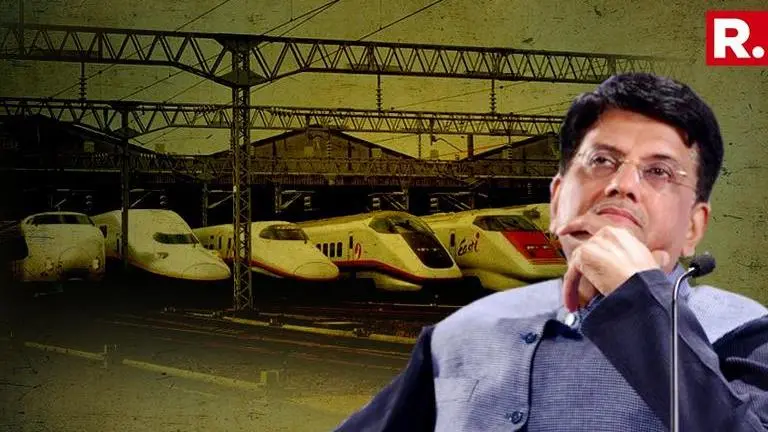Updated 4 October 2018 at 17:05 IST
Shinkansen bullet train faced opposition even in Japan, naysayers in India too: Railway Minister Piyush Goyal
Railway Minister Piyush Goyal narrated the story and journey of technological advancements and those who opposed it.
- India News
- 0 min read

When the bullet train was conceptualised in Japan, it was opposed by many, Railway Minister Piyush Goyal said on Thursday amid growing opposition for the Mumbai-Ahmedabad Bullet train project over the high costs involved.
At the second International Conference on Technological Advancement in Railways and Metro Projects 2018, he said the railways will have to look at the best of the technology available anywhere in the world and apply it to the country's infrastructure.
"I am glad to share that when the Shinkansen bullet train was first conceptualised in Japan in the 1950s, many Japanese politicians and academicians had strongly opposed it. We have a fair share of naysayers in the country. Whenever we speak of introducing new technology or bring up an out of the box idea, there is a lot of resistance," Goyal said.
The minister narrated the story and journey of technological advancements and those who opposed it.
"I am sure when horse carriages were replaced by steam engine trains, there must have been many naysayers," he said.
Advertisement
Goyal further said when the ministry introduced the concept of a high-speed train between Mumbai and Ahmedabad, the idea "wasn't only about speed but about introducing the latest technology in the country."
Advertisement
The minister said the need of the hour was to figure out how technological innovations can make the railways safer, more efficient and help expand its capacity at the least cost.
He proposed that railways follow the convoy system in freight train movement, which, he said, was successfully tried in the East Central Railway zone.
"Why do freight and passenger trains have to intertwine with each other, reducing speeds and clogging the network? Last week, we finally tried a convoy concept of freight trains. Forty freight trains in this convoy were able to run at higher speeds due to lack of interference from passenger trains. This concept will increase efficiency and revenues for the railway," Goyal said.
Stating that he was looking to create a 'new railway', the minister emphasised that it will have a better level of cleanliness, quality assurance and a open minded business outlook.
The bullet train project, which is embroiled in land acquisition issues in both Ahmedabad and Gujarat, was launched by Prime Minister Narendra Modi and his Japanese counterpart Shinzo Abe in September last year.
The bullet train on the proposed track will run at a speed of 320-350 kmph. There will be 12 stations across the 508-km stretch. A part of the stretch is expected to be operational by 2022.
On October 1, as many as 40 new petitions were filed in the Gujarat High Court by farmers challenging the land acquisition process for the Mumbai-Ahmedabad bullet train project.
Earlier, 1,000 farmers had submitted individual affidavits in the High Court against the land acquisition process.
For the project, around 1,400 hectares of land will be acquired in Gujarat and Maharashtra, 1,120 hectares of which is privately owned. Around 6,000 landowners will have to be compensated.
Published By : Press Trust Of India
Published On: 4 October 2018 at 17:05 IST
